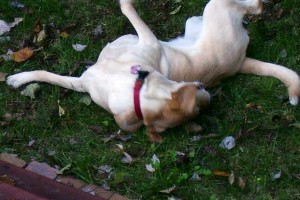The August Nieman Editors’ Roundtable is up discussing a terrific story about a 20-something man masquerading as a teenage high school hoops star. Go to: http://bit.ly/qLBbx4
Author & Editor
News
A Real Beaut
In the world of Entertainment, even the ugly people are beautiful. A script demands an unattractive character? No problemo. Just stick a bad haircut or glasses on a supermodel. Producers seem to feel that, as a plot point, homeliness can be endearing. But in the flesh, it is unforgivable.
Pay attention to the extras wandering around in the school corridors, hospital waiting rooms, even the truck stops as depicted in movies and TV shows. All gorgeous. As are the hairdressers, cable guys, dental assistants and high school guidance counselors who wander briefly into the shot, if only to speak a throwaway line like, “How often do you floss?”
Of course the feminist movement of the past generation has had some impact on our collective babe addiction. Used to be that in popular novels female protagonists were distinguished by a single attribute: their beauty. Today, I’m glad to say, the heroines are multifaceted. Every last one is now described as, “brilliant and beautiful.”
So maybe I shouldn’t be surprised by the revelations about the edition of Self magazine now at grocery checkout counters. The issue, devoted to “Total Body Confidence,” features a gleaming image of Kelly Clarkson

The cover text conveys the impression that Self is Selflessly speaking out against the beauty Nazis in our culture who would devalue all humans marred by cellulite or deficient cheek bones. Inside, Clarkson talks about her heavily chronicled fluctuations in weight, and insists they are nobody’s business. “My happy weight changes,” the magazine quotes her as saying. “Sometimes I eat more; sometimes I play more. I’ll be different sizes all the time. When people talk about my weight, I’m like, ‘You seem to have a problem with it; I don’t. I’m fine!’
That point is emphasized on the blurb beside her photo: “Stay True to You and Everyone Else Will Love You, Too!”
The editors must have been on a tight deadline, because they forgot to add, “Unless You Are Fat!”
Kelly Clarkson may be fine with her weight, but despite all the P.C. packaging, Self magazine definitely has a problem with it. Unretouched photos taken at the time of the cover shoot showed her packing maybe 30 extra pounds. You’d never guess it looking at the cover photo: the flab was so thoroughly airbrushed away they might as well have just pasted her head on some other (very buff) woman’s body.
The irony was delicious enough on its own, but ironists everywhere got a special treat when Self magazine editor Lucy Danziger showed up on the Today Show this morning to defend/promote the Clarkson cover.
No matter what question was thrown her way, Danziger just kept spouting versions of the official statement: “Kelly Clarkson is a strong and healthy woman and is working out regularly, and all our magazine did is to display that confidence, self esteem and beauty. We love this cover and we love Kelly Clarkson.”
She alternated that non-denial denial with affirmations of the issue’s alleged feel-good theme, that beauty came from the inside and that women needed to feel good about their bodies and refuse to be repressed by unrealistic visions of the female form.
To Meredith’s credit, she kept pressing: Then why did they feel compelled to airbrush Clarkson into a Vargas Girl?
“We just wanted her to look her best!” Danziger chirped.
Now, that’s beautiful. In an ugly sort of way.
Sneaking Up On You
Usually, the delightfully eccentric Kyra Sedgwick is the only thing that captures my attention in the TNT cop drama The Closer. But the other night, something else jumped out and grabbed me by the lapels. Kyra wanted to go after a suspect in something other than a department-issued sedan, so she turned to one of her detectives and asked, “What kind of car do you drive?”
“A Prius,” the staffer responded with dawning horror. “But it is brand new, and I just washed it!”
Nobody denies Kyra anything, and this would be no exception. She commandeered the car. As they pulled out of the station the camera lovingly lingered on the Prius’s distinctively aerodynamic exterior before switching to an interior view. I began to get an uneasy feeling as it panned slowly down the car’s control panel, lingering unsubtly on the “Energy Flow Diagram” in the touch screen. My uneasiness turned to queasiness when they approached the perp, conveniently caught in the act of burying a body, and Kyra urges stealth. The detective responded, “This car has an all battery mode, so we can drive in without making a sound!”
Now I felt dirty. All I wanted was to slurp up a little free entertainment, when without warning, the hour drama I’m watching morphs into an advertisement for Toyota.
“So what?” my wife asked me. “It kind of fit the show, and it’s not like you don’t already know that this is commercial television.”
 She had a point. And ever since E.T. the extraterrestrial followed a trail of Reese’s Pieces more than a quarter century go, thereby driving a 65 percent surge in sales of the chocolate-peanut butter treat, paid product placement has become a given in almost every movie and television show.
She had a point. And ever since E.T. the extraterrestrial followed a trail of Reese’s Pieces more than a quarter century go, thereby driving a 65 percent surge in sales of the chocolate-peanut butter treat, paid product placement has become a given in almost every movie and television show.
But somehow this hit me as different. Previously, the advertising pitches began and ended with the “placement.” The product just showed up on screen, nothing more. This was something else. The Prius wasn’t just sitting at the curb, it had been written into a plot in a way designed to emphasize the car’s selling points. These characters we have bonded with were pitching us, playing us for suckers. It wasn’t about the art of making a good TV drama, it was about sales.
And that’s when I realized why it had hit me so wrong. Two times over the years, my wife and I had begun to make friends with another couple, only to discover that the new “friends” were really more interested in pitching us something than getting to know us. The first time, the husband cornered me and tried to sell me satellite TV. The other couple made my wife the target: they wanted to persuade her to convert. On both occasions, the evenings instantly turned to ash and we felt violated, our good will abused.
Now we discover that Facebook, that haven for online “friends,” is actually signing folks up to market products to their buddy networks. “People naturally seek out products and make buying decisions based on recommendations from their friends,” the promotional material for the “Market Lodge” program astutely notes.
Yeah, that’s because they trust their friends, and believe that friends have only their well-being in mind, as opposed to, say, a 10 percent commission on the sale.
Suckers.
Dog Food
Last night, I got delayed by some paperwork and was late for my dog’s daily walk. There’s nothing in writing – no contractual clauses or promissory notes or anything. But my dog knows, almost to a minute, when her walk is due. If I’m late, she’ll give me a grace period of about 15 minutes.
When my grace time was up last night, she positioned herself in front of where I was working, lowered her shoulders and stretched her head forward so she could look past the papers directly into my eyes. When I ignored her, her tail began to switch and her gaze went from pleading to accusatory. I knew what was coming next. Increasingly outraged, dog food-scented barks. One at a time, until I relented
“You’re lucky I don’t eat you,” I said, immediately regretting it. But I hadn’t come up with this gruesome thought on my own. I’d just read about a study published this week by geneticists at the Royal Institute of Technology in Stockholm, which had arrived at a startling and disturbing conclusion: wolves were originally tamed and domesticated into modern dogs in East Asia for … food.
And here I thought it was because people couldn’t get enough of being bugged to throw a stick – over and over again.
The Swedish researchers have also deduced, based on the fact that the diversity of dog DNA decreases the further you get from China, that wild wolves were turned into dogs just once. After the initial domestication, the descendants of those first dogs spread rapidly through the rest of the world.
In other words, domestication of canines was so useful that every group coming in contact with the custom wanted to import it. Only — and this is where things get strange — as dogs spread, the use that initially made them so important virtually disappeared.
Somehow the dog went from prime rib and rump roast to watchdog and beloved companion.

Food for thought?
I think I know why. Dogs, inherently social and clever creatures, learned that their human captors were wildly unpredictable. At times, they could be kind and even loving. At others, they would become, quite literally, butchers. Over untold generations, some dogs – those must likely to survive — developed a key skill by watching their masters, well, doggedly. They discovered that if they paid close attention to minute changes in a human’s face and eyes, a mood could be intuited. They could discern, for instance, the difference between a playful look and a hungry one.
Last year, British scientists published a study demonstrating that dogs are the only animals that do what humans do: study faces for clues to the emotions behind them. Somewhere along the line, dogs also learned how to communicate emotion through their eyes.
This is what my dog was trying on me, with the expertise that only 14,000 years of practice can produce.
Those deep, imploring eyes gave me an insight: No doubt if cows had learned to gaze pleadingly into human eyes, we’d eat far less beef.
And then I obediently went to get her leash.
Recent Comments
- Tara Solomon on Acid Test, Optimized Edition
- Tom Shroder on My WaPo Travel Story On the Dordogne
- abriat christian on My WaPo Travel Story On the Dordogne
- Kerthy Fix on Acid Test’s Trip to the Movies
- Tom Shroder on Standing Up for Freedom
Archives
Copyright © 2024 Tom Shroder
Terms of Service & Privacy Policy | Data Access Request